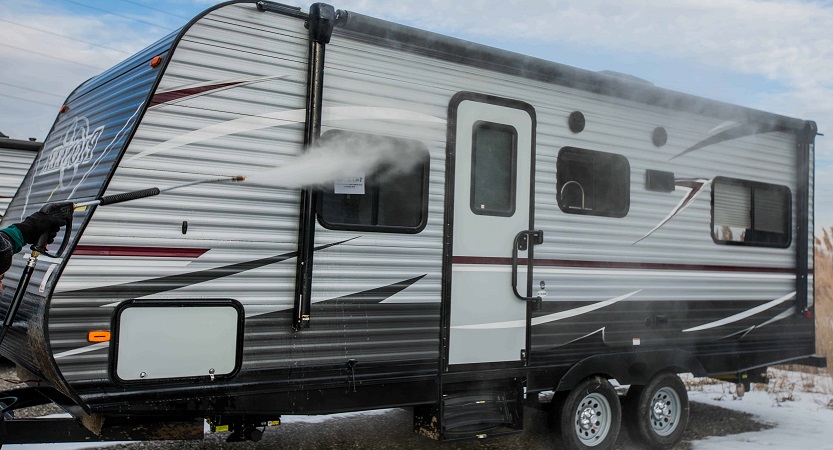Washing an RV can be very different from washing a regular automotive like your good old car. RVs are like an entire house packed into a large bus, and they have a different structure with different washing requirements.
Most car washes don’t offer great RV washing service. Hence, it is important for RV owners to be able to handle the job on their own.
Most people don’t pressure wash their RVs because they are not experienced and informed enough in terms of using these popular appliances called pressure washers. Of course, there’s an entire market full of varieties of pressure washers that have different technical aspects that must be considered before you use them.
What do I need to know about a pressure washer to use on my RV?
It is a plus if you have experience using pressure washers, but we can work without that advantage as well. If you are not experienced, you can make up for the experience gap by being well-informed and cautious.

The first thing that you need to make sure of is that your pressure washer has a PSI under or around 2000 at the maximum – gas pressure washers usually have 3000 PSI or above which is strictly not safe.
Any more pressure than that and it will speed up the maintenance routine of your RV. The next important thing is to make sure that it has adjustable pressure and enough accessories that you can use with it.
Most RVs have gaskets and different parts that are intended to provide a lightweight design for easy locomotion and make them more fuel-efficient. That is why you have to be more careful about not getting any water into the different layers or damaging any part.
If your pressure washer has a twistable pressure adjustment nozzle, good. If it does not, pick one that comes with many different nozzles. Another thing to make sure of is that it has a foam cannon or soap nozzle. Applying soap or detergent to disinfect your RV is very important. It accumulates road dirt, and that makes disinfection an important part of the RV washing process.
If you have an extension wand or interchangeable wands of different types available for the pressure washer, you would do well to get some of those too. The wand is the key component that drives the pressure into the nooks and crannies of your RV at your desired level. You will also be more comfortable using it that way.
What are the protocols for pressure washing different parts of an RV?
Different parts of your RV require different types of care and cleaning – depending on their durability, structure, staining or dirt accumulating tendencies. That is why we have divided the cleaning tutorial into steps about each different part:
The Body
There are three types of RV bodies in the market today, and you need to use a different pressure washing protocol for each one of those. Plain metal bodies accumulate the most dirt and dust, and they are the hardest to clean because they require a prewash.

You will need an accessory like a rotary brush to make sure that it is free of dust before you start washing it. It will also require more pressure than average to get off the grime and dirt that sticks to the metal body.
For a painted metal body, the protocols are essentially the same as those that you would use for a regular car wash. Use a foam cannon to spray soap on it and then wash it off with a low to medium pressure and wide-angle nozzle.
Lastly, a fiberglass body requires lighter pressure and more gentle handling overall due to its lightweight design for fuel-efficiency. A low-pressure foam cannon is important for pressure washing such RV bodies too.
Gaskets
The gaskets also require a very light range of pressure. You have to make sure that you do more detailing with the gaskets and remove dirt neatly without getting water into the layers.
Wheels
It is never a good idea to use lots of pressure on rubber, so a rotary brush and other similar accessories will help you reduce the chances of damaging the wheels too.
Roof
A rubber roof has different, special requirements compared to a fiberglass roof. You can use your regular pressure washing protocol on a fiberglass roof – the one that you did on the fiberglass body. However, if you have a rubber roof, it’s better to use much less pressure – the lowest option offered by your pressure washer. Also, be careful about stepping on top of it because you might just end up stepping through it.


